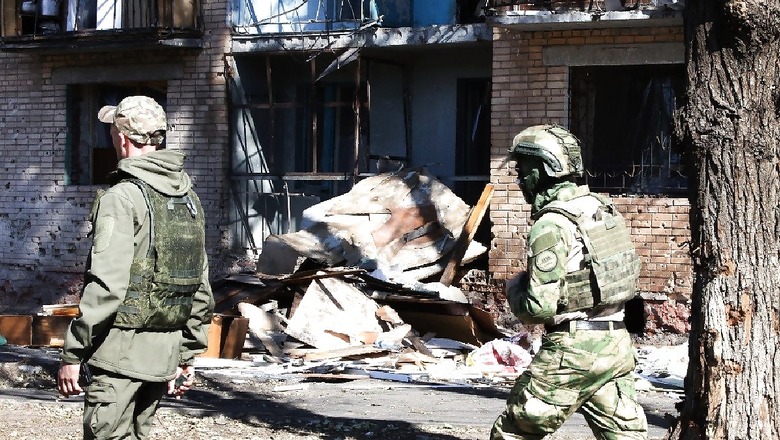
views
Russian forces are closing in on the strategically important city of Pokrovsk in Ukraine’s eastern Donetsk region, prompting some residents to evacuate for fear it will fall in the coming weeks.
Here are some key points about the city and the battle.
WHAT IS POKROVSK?
Pokrovsk is a road and rail hub and a city with a pre-war population of 60,000 people, tens of thousands of whom remain even as many evacuate.
It lies on a key road used by the Ukrainian military to supply other embattled Ukrainian-held outposts, such as the towns of Chasiv Yar and Kostiantynivka in the Donetsk region.
A coal mine that is Ukraine’s largest producer of coking coal, which is used in its steel industry and was vital for its pre-war economy, is only a 20-minute drive to the west.
Since 2014, when Ukraine lost control of the regional capital – the city of Donetsk – Pokrovsk has hosted an important technical university, the largest and oldest in the wider region.
WHY DOES RUSSIA WANT POKROVSK?
Moscow says it has annexed Ukraine’s eastern Donetsk region, a claim Kyiv rejects as illegal, and sees taking control of Pokrovsk as an important stepping stone to incorporating the entire region into Russia.
Control of the city, which the Russian media call ”the gateway to Donetsk”, would allow Moscow to severely disrupt Ukrainian supply lines along the eastern front and boost its campaign to capture the city of Chasiv Yar, which sits on higher ground offering potential control of a wider area.
Squeezing the Ukrainian military’s access to the road network in the vicinity would make it harder for Kyiv’s troops to hold pockets of territory either side of Pokrovsk, which could allow Russia to consolidate and advance the front line.
WHAT IS UKRAINE DOING TO DEFEND POKROVSK?
President Volodymyr Zelenskiy, who has warned the situation near Pokrovsk is ”difficult”, said on Aug. 26, after being briefed by the head of the army, that Ukraine had decided to ”further strengthen” its forces in the Pokrovsk sector.
He said the sector was facing the heaviest wave of Russian assaults, but predicted Russia would have to sacrifice tens of thousands of troops to achieve its aims.
The area around Pokrovsk is home to various industrial facilities that are likely to be used by the Ukrainian army to dig in and defend the city, though Russia is likely to use devastating glide bombs against them.
Ukrainian forces are meanwhile trying to expand their control of territory they have taken in Russia’s western Kursk region after launching a surprise incursion there on Aug. 6. One of the stated aims of that operation was to try to force Russia to divert its own forces from the eastern front to ease pressure on places like Pokrovsk.
But Oleksandr Syrskyi, Ukraine’s top commander, said on Aug. 27 that Moscow had understood Kyiv’s aim and had continued to focus its efforts on Pokrovsk, where he said Russia’s most capable units were concentrated.
Syrskyi said Ukrainian forces were engaged in active engineering work on defensive positions in the area.
WHAT DOES POKROVSK LOOK LIKE NOW?
The blue and yellow Ukrainian flag continues to fly over Pokrovsk and some residents continue to evacuate westwards by rail and road, while others try to go about their daily lives and are reluctant to leave.
During a visit to Pokrovsk on Aug. 23, Reuters reporters saw that many buildings had their windows boarded up, including the Donetsk National Technical University, whose steps were covered with rubble and debris after what officials said was a Russian missile strike earlier this year.
Other buildings had their windows blown out and their roofs, balconies and facades badly damaged. The sound of occasional shelling was audible in the distance as female pensioners sold vegetables in the street and a food shop emptied its shelves ahead of closure.
Vadym Filashkin, the Donetsk regional governor, said that as of Aug. 19 some 4,000 children were among 53,000 people still living in the Pokrovsk area. He ordered the evacuation of children from Pokrovsk and its vicinity on the same day.
Residents say power and water has long been cut.



















Comments
0 comment